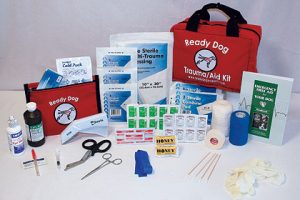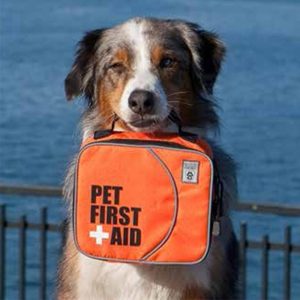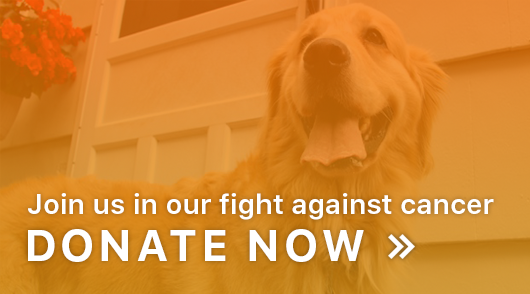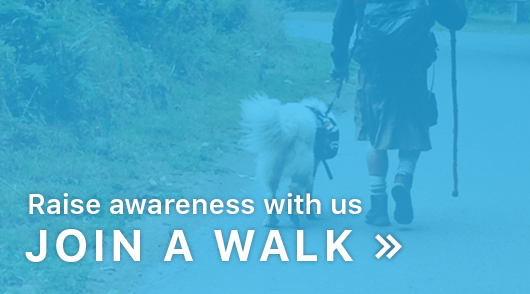
Natural disasters are increasing in both frequency and magnitude around the world. Tornadoes are striking in new areas, hurricanes are making landfall at Category 3 or 4 rather than 1 or 2, monsoon seasons are now being referred to as flood seasons, and earthquakes rumble stronger than ever before.
All animals are impacted by natural disasters; no one gets a pass regardless of their species or where they live. We are animal companions, caregivers, and animal stewards. We must accept the responsibility as guardians of our environment to reduce the impact of disasters on the animals we cherish by being aware of and reducing the threats that face us all.
As part of this approach, I am excited to share links to information about National Animal Disaster Preparedness Day to reignite the discussion around how to prepare for the next disaster that may be heading your way.
“It will never happen to me. Disasters won’t affect me and my family,” are famous and often tragic last words. Please take a moment to think about how you would evacuate your home with your pets, both small and large. Do you have a plan in place? If not, we invite you to use International Fund For Animal Welfare‘s checklist to create a strategy for your whole family. Make this a fun planning event so everyone can be engaged and know what to do.
In addition to pets, wild animals are vulnerable during and after disasters most often because their homes are damaged or destroyed. We need to respect their wild nature more than ever during a disaster and ensure that they continue to have safe homes. Think ahead about the wildlife in your community. Perhaps you could learn which species live near you and imagine how they may be impacted by a natural disaster. What can you do to reduce disaster risks to these special neighbors? Do you have wildlife rehabilitators or animal control officers in your region? They are trained to know exactly what to do to help animals in need. Write their information into your plan and then you and your family will know who to call if you find a sick or injured wild animal.
It is impossible to know when or where the next disaster will strike, but being prepared is the best way to ensure your family, including your furry friends, will be safe. Sit down with your family and make a plan today!
When hurricanes, floods, fires, tornadoes, snowstorms and other disasters threaten human and animal lives, the International Fund for Animal Welfare (IFAW) is there to help. IFAW rushes to aid stranded or entangled marine mammals and rescues animals left vulnerable by natural and man-made disasters all around the world. Before disaster strikes, IFAW works with local communities to help them better prepare. You can help by doing your part to prepare for disasters in advance.
Prepare a Pet First Aid Kit
Pets are particularly vulnerable when there is a natural disaster or an unexpected, man-made disaster. Most pets, in particular dogs and cats, are dependent on the humans they live with to take care of their safety when something bad happens. Pets are typically low priority for search and rescue teams and other services when a disaster hits because these organizations have to focus on human needs first. If you have pets, there are several steps you can take to protect and care for your animals:
Be Aware of Your Surroundings & the Region
If you live in an area prone to flooding, research what you’re most likely to need in the event of a flood and have it on hand. If you live in the Midwest, where tornadoes are frequent, know what you and your pets should do in the event of a twister. In parts of the Northeast where blizzards are a real threat, be sure you have enough supplies to keep you and your pets fed, safe and warm if the roads are impassable. Follow weather forecasts and pay attention to advisories from local meteorologists and the National Weather Service.
Stock A Pet First Aid Kit
The simplest way to help your pet in the event of an emergency or injury is to have a pet first aid kit handy. It should include a variety of items to protect him from infection, stave off illness and keep him hydrated. At minimum, include:
- An assortment of bandages, pads and rolls of gauze
- Adhesive first aid tape
- Scissors
- Needle and thread
- Tweezers (for removing splinters, debris from eyes, etc.)
- Clippers
- Antiseptic
- Styptic pencil
- Pet thermometer
- Clean rags, towels, sheets and blankets
- Disposable litter boxes & cat litter
- A traveling bag or crate for each pet
- Bottled water (enough for 5-7 days)
- Pet food (enough for 5-7 days)
- Clean, portable bowls for food and water
- Any prescription medications your pet(s) may need
- Medical history of your pet(s)
- Leash and collar or harness
- A muzzle (injured animals may bite those trying to help them)
- Recent photo of your pet(s)
- Contact information for local veterinarians, shelters, animals hospitals, etc.
- Splints or items that can be used as splints for broken bones
- A life vest for each pet
- Toys and treats to help keep your pet calm
- Notepad and paper in the event you need to leave a message for others
- Calming drops, a Thundershirt or whatever you need to help your pet(s) cope with anxiety
Once you’ve collected all that you need, store it in a watertight container such as a rubber box with a locking top. Store it in a location that is easily accessable but safe from damage by natural disasters. If you live in an area prone to flooding, but your pet first aid kit above the floor, preferably above your head on a shelf you can reach.
Be Prepared
Disasters usually strike without warning. To be as prepared as you possibly can, consider taking a pet first aid course NOW, before your pets are injured or hurt during a disaster. A dog or cat could break a leg, stop breathing or become ill after a disaster and you could be the only person able to keep them alive until professional help is found. Sign up for a pet CPR and first aid course near you or get online training through an approved school such as ProTraining’s ProPetHero course. The investment of your time and $50 will be well worth it even if your pet is injured or ill just one time.
Keep Calm and Follow Directions
When disaster strikes, stress and confusion can make the situation worse. Emotions such as fear can cloud judgement. Your pets will be even more anxious because they won’t understand what’s going on and they will sense your own fear or confusion. You’ll need to remain calm and rational. Be aware of where you need to go and what you should do – or NOT do – in order to preserve order. Keep in mind that you should NOT leave your pets behind if you are ordered to evacuate or your home becomes dangerous or unlivable. In the event of an emergency, organizations like FEMA and the Red Cross will be focusing on rescuing families, the disabled, those who are sick or ill, and creating order. They will have little time and no resources for rescuing animals. In most cases, pets can’t survive on their own and they can easily become lost.
Teach your pets what to do if there is an emergency in your house. They can be easily trained to respond to a smoke alarm by evacuating your house and waiting for you in a designated area. Practicing periodically can keep these instructions fresh in their minds. Find out what shelters, animal rescues, etc. in your area can care for pets if there is a disaster; if you and your pet(s) become separated, you’ll know where to look for them.
Keep Your Pets Properly Tagged
Microchipping is the best way to get information about your pets into the proper hands if they are injured, lost or hurt. This can easily be done by most veterinarians. If your pets aren’t chipped, make sure they have current ID tags, rabies tags and any medical alert tags that could help caregivers care for them properly.
The ASPCA offers a free Pet Safety Pack that includes a sticker alerting fire and rescue teams that you have pets in your house and a magnet with poison control information that you can stick on your refrigerator. To get yours, visit the ASPCA website’s Pet Safety Pack page.
Sources:









